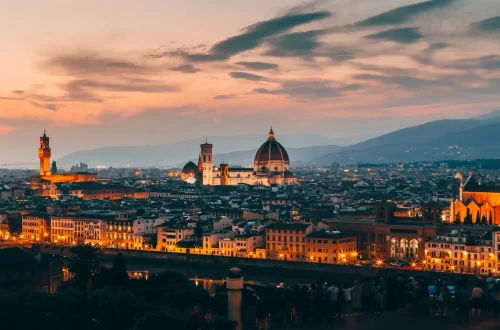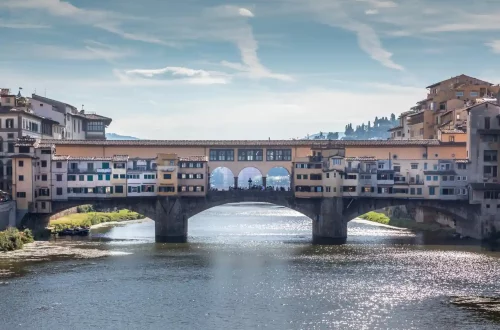Among the many treasures of Rome, few landmarks capture the imagination and spirit of the Eternal City quite like the Trevi Fountain.
Known in Italian as Fontana di Trevi, this late Baroque masterpiece is not only one of the most iconic fountains in the world but also a symbol of Rome’s rich artistic heritage and mythological storytelling.
Located in the heart of the Trevi district, the fountain draws millions of visitors each year who come to admire its grandeur, toss coins into its waters, and connect with centuries of history.
Historical context and location
The Trevi Fountain stands at the junction of three streets—hence its name, derived from the Latin word trivium, meaning “place where three roads meet.” The fountain is placed directly against the Palazzo Poli, creating a dramatic architectural backdrop that enhances its theatrical design.
The site has long been associated with water and public fountains, dating back to ancient Roman times when the Aqua Virgo aqueduct supplied water to the city.
The Aqua Virgo, constructed in 19 BC by Marcus Agrippa, son-in-law of Emperor Augustus, was originally built to serve the Roman Baths. The Trevi Fountain marks the terminal point of this aqueduct, and for centuries, its water was considered the purest and best-tasting in Rome.
In fact, barrels of Aqua Virgo water were once delivered weekly to the Vatican. However, the water is now nonpotable.
Take advantage of specialized assistance to secure your passport for a borderless future.
Origin and construction
The Trevi Fountain as we know it today began to take shape in the 18th century. In 1629, Pope Urban VIII criticized the existing fountain for lacking dramatic flair and commissioned the renowned architect Gian Lorenzo Bernini to redesign it. However, Bernini’s plans were abandoned following the pope’s death.
Nearly a century later, Pope Clement XII revived the project and launched a design competition to select a new architect. Although Florentine architect Alessandro Galilei initially won, public outcry led to the appointment of Roman architect Nicola Salvi in 1732.
Salvi’s vision for the fountain was inspired by the theme “Taming of the Waters.” The architect used travertine stone for the structure and Carrara marble for the statues. Salvi died in 1751 before the fountain was completed, as a consequence, Giuseppe Pannini took over the project, made slight modifications, and oversaw its completion in 1762.
Take advantage of specialized assistance to secure your passport for a borderless future.
The result was a breathtaking spectacle: the fountain stands 85 feet (26 meters) high and spans 160 feet (49 meters) wide, making it the largest Baroque fountain in Rome. At its center is Pietro Bracci’s statue of Oceanus, the titan god of the freshwater river that encircled the world, who rides a shell-shaped chariot pulled by two sea horses—one calm, the other wild—symbolizing the changing moods of the sea. Tritons guide the horses, adding movement and vitality to the scene.
To the left of Oceanus stands the statue of Abundance, holding a horn of plenty and standing over a toppled vase. Above her is a relief depicting Agrippa instructing his men to build the aqueduct.
On the right is the statue of Health, crowned with a wreath and holding a cup from which a snake drinks—a classical symbol of healing. The relief above her shows a virgin pointing out the water source to Roman soldiers.
Above these central figures are four smaller statues that represent the fertility of nature. These include the Abundance of Fruit, Fertility of Crops, Products of Autumn, and Joy of the Gardens. Each figure holds symbolic items such as wheat, grapes, flowers, or a horn.
Cultural significance and traditions
Beyond its artistic and historical value, the Trevi Fountain holds a special place in popular culture and local tradition. One of the most famous rituals associated with the fountain is coin tossing.
Visitors stand with their backs to the fountain and toss a coin over their left shoulder. According to legend, the first coin ensures a return to Rome, the second brings romance, and the third promises marriage.
This tradition gained international fame through the 1954 film “Three Coins the Fountain”, which romanticized the act and solidified it as a must-do for tourists. However, the practice may have roots in ancient Roman customs, where people would drink from the fountain and toss coins as offerings to the gods for good fortune.
The coins collected from the fountain are not just symbolic—they serve a practical purpose. The money is regularly gathered and donated to charitable causes.
Visiting tips
For those planning a visit to the Trevi Fountain, timing can make all the difference. While the fountain is stunning at any hour, early morning visits—especially at sunrise—offer a chance to experience its majesty without the crowds. At night, the fountain is beautifully illuminated, creating a magical atmosphere that highlights its intricate details.
Visitors should also be mindful of pickpockets, as the area can become quite crowded. Keeping personal belongings secure and staying alert ensures a safe and enjoyable experience. And of course, don’t forget to bring a coin—or three—for the ritual toss.
The Trevi Fountain is more than a tourist attraction; it is a living monument that embodies the artistic, historical, and cultural essence of Rome. From its ancient aqueduct roots to its Baroque splendor and modern-day traditions, the fountain continues to inspire awe and wonder.
Whether you’re drawn by its beauty, its legends, or its symbolism, a visit to the Trevi Fountain is a journey into the heart of Rome itself.






